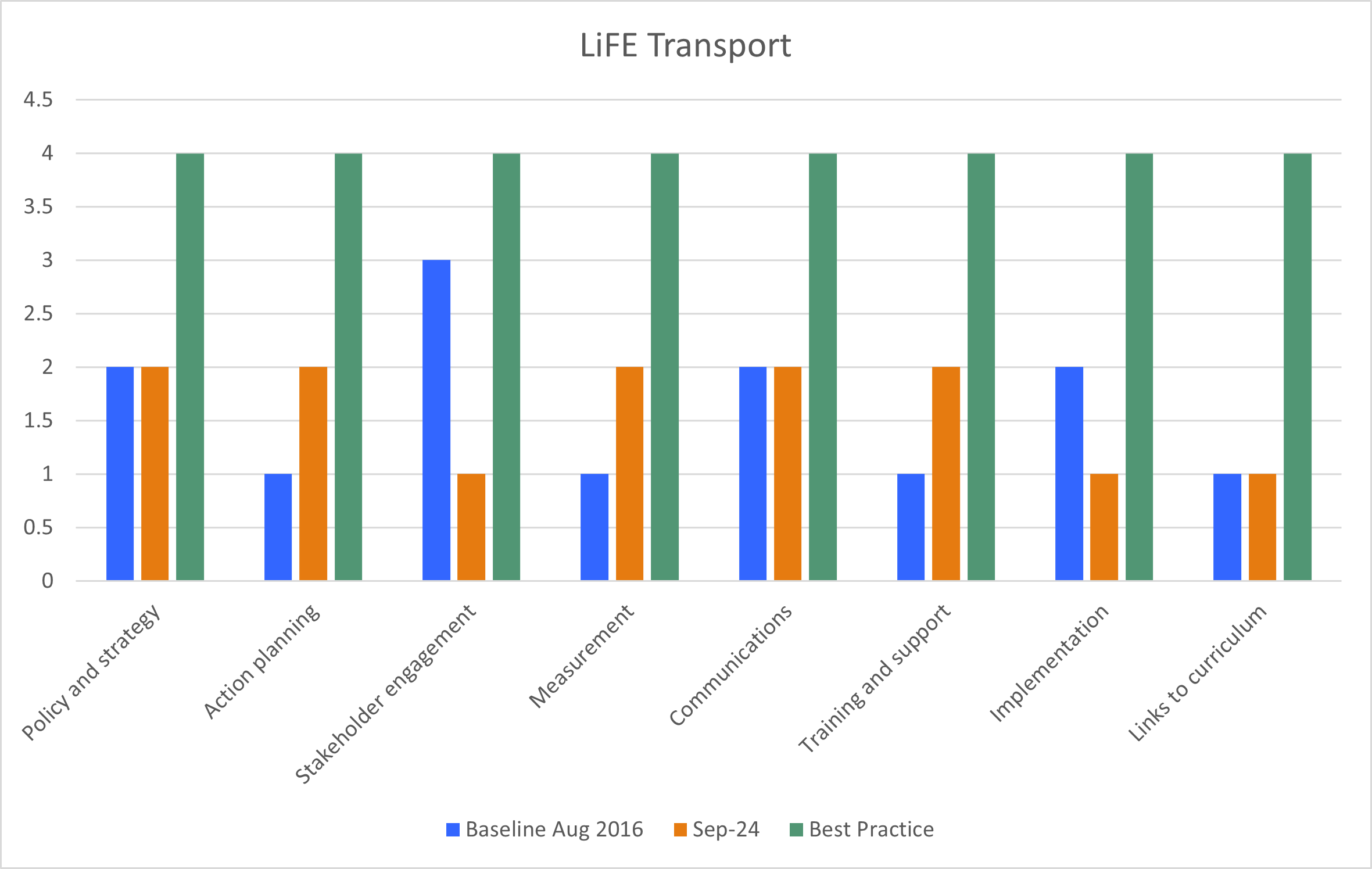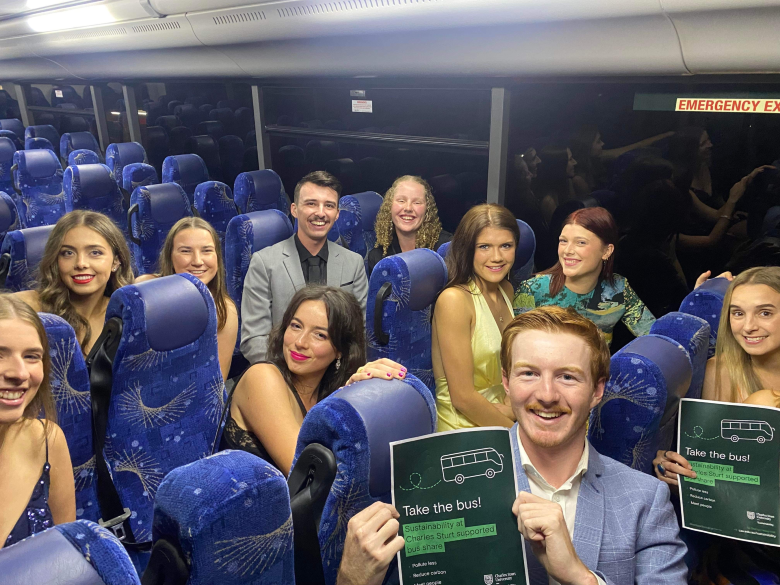Sustainability
- Home
- Locations
- What you can do
- LiFE Framework
- Sustainable Development Goals
- About us
- Grants
- Events
- Contact us
Now searching for:
Sustainable transport is making informed choices about the way we travel and knowing how these choices affect:
Accountability against travel-related emissions is not yet recognised through state or federal legislation, though debate on how to tackle carbon emissions from travel and transport has risen to unprecedented prominence in recent years.
Given the high number of people at Charles Sturt University, our travel patterns have a significant impact on our surrounding communities, for example, though traffic congestion and pollution. Plus, travel and transport costs Charles Sturt University money, much of which is not immediately evident. Vehicle fleet management are only the visible tip of the iceberg – under the surface are many hidden costs.
If the impact on the balance sheet is worse than it first appears, the same is true of the impact on the environment. Transport is the fastest growing source of greenhouse gas emissions, with commuter and business travel constituting nearly 40 per cent of kilometres driven by cars each year.
Charles Sturt University is committed to reducing and adapting vehicle use and will continually seek to reduce our carbon emissions.
This framework was benchmarked on 17th August 2016. The below graph illustrates our progress towards best practice across the eight (8) activity areas. The green bars reaching four (4) highlight best practice and the bars in red indicate the University’s current baseline ratings.

In 2022, the carbon emissions associated with land-based transportation and flights required for Charles Sturt University’s business operations totalled approximately 3,570 tonnes. A range of initiatives are being delivered with the aim of curbing these emissions while also encouraging the health and social benefits of active travel.
Walking, cycling, carpooling and catching public transport are all great ways to travel sustainably to Charles Sturt. Active transport is good for your health, for building relationships and connecting with your community, and it’s better for the environment. Learn more about the active transport options for your Charles Sturt University campus today!
Each year, staff and students get involved in Ride2Work Day, Bike Week, the staff bike share scheme and regular cycling to and around campus.
Get active and catch the bus to campus. Check out our Transport Access Guides (TAGs) for info on the services in your area.
Sustainability at Charles Sturt's bus subsidy is available to student clubs and associations to assist with the cost of buses to and from university associated events.
Clubs can apply twice per year and the subsidy pays for 50% of bus hire to a maximum of $200 per subsidy.

The COVID-19 pandemic prompted significant changes to the utilisation and composition of the Charles Sturt passenger vehicle fleet. Plans commenced in 2022 for the establishment of a passenger vehicle fleet reserve focussed on lower emission plug-in EV and hybrid vehicles along with EV charging facilities to service university-owned fleet vehicles. Future stages of investment in EV charging will focus on meeting the needs of EVs owned by students, staff and campus visitors.
Stay fit and reduce your carbon footprint by joining the active transport community and cycling or walking to Charles Sturt University and around campus.
Register your interest in participating in organised ride to campus events or accessing university-owned share bikes by contacting the Sustainability at Charles Sturt team sustainability@csu.edu.au.
You can use a Transport Access Guide (TAG) to show you how to access the campus from the Central Business District (CBD) in Albury-Wodonga, Bathurst, Dubbo, Orange, Port Macquarie and Wagga Wagga in a more active way. Active transport includes walking, cycling and public transport.
Upgrades and extensions have been made to the multipurpose paths, end of trip facilities and bus shelters located at a number of Charles Sturt campuses. These enhancements are intended to make walking, cycling and public transport to be a desirable alternative to private vehicle use and to increase pedestrian safety. To find out more about the walking trails available at your local campus, visit FMCentral and ensure the ‘Recreation’ layer is selected.
Charles Sturt University aligns our research, policies, procedures, and other work with the UN Sustainable Development Goals (SDGs). These are the most relevant SDGs for this initiative.
